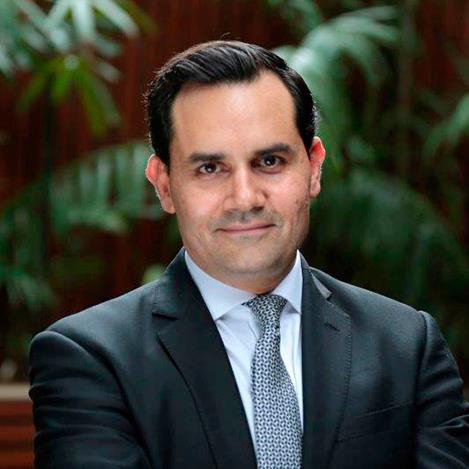CEOs who helm companies owned by private equity (PE) firms face a leadership challenge unlike any other. They must master everything a great public- or private-company CEO does, all while operating at a higher metabolic rate. A newcomer to PE also faces the conundrum of having limited access to insight about the road ahead, because there is so little specific guidance in print about the portfolio-company CEO role. Its unique demands and nuances, however, need not be a mystery.
The world’s top PE firms can’t afford to skimp on CEO talent. The partners who hire, manage, and sometimes dismiss their portfolio-company CEOs think deeply about what sets their investment philosophy and ideal leaders apart.
“In short, we are constantly looking for the CEO with an ownership mentality,” said one PE-firm executive in Asia. In the interview process, this executive hopes “they will ask, ‘What is your underwriting base case and expected holding period? How much value do you expect to generate?’”
Executives at other PE firms highlight additional traits they consider essential to the CEO role, including nonhierarchical thinking, an instinctual grasp of financial metrics, and superlative team-building skills. These executives collectively emphasize the abundant support large PE firms offer their leaders, including operations teams, functional experts, senior advisers, trusted confidants, and a network of other CEOs within their holdings. The ability to derive benefit from these allies is a key leadership strength. In the words of one PE partner, “If they have the art to leverage the network to their advantage, they will be successful. Those who just use their wits will not be as successful.”
The lore of great public-company CEOs is so embedded in business culture that our definitions of leadership itself largely come from their experiences. However, at a time of unprecedented PE deals, more companies require leaders attuned to a portfolio company’s specific mission and pace, making it increasingly urgent to generate a body of knowledge about the CEO role. After massive COVID-19-related disruptions in the second quarter of last year, global PE deal flow increased 35 percent in the third quarter, compared with the prior quarter, and another 15 percent in the fourth quarter. Despite the pandemic, PE firms closed more than 3,100 deals in the fourth quarter, the largest count of any quarter to date.1 More is likely to come: global PE uncalled capital has reached $1.4 trillion, an early sign that 2021 may be a banner year for deal flow.
In 2020, PE firms paid higher purchase multiples in the United States than during any year in history, rising in one year from 11.9 times to 12.8 times. To put the multiples growth into context, an investor in 2020 paid 30 to 40 percent more than a decade ago to acquire the same earnings before interest, taxes, depreciation, and amortization (EBITDA). To create alpha in their portfolios and justify higher multiples, PE firms are increasingly moving to an even more hands-on engagement model.
This article, informed by our work and several recent interviews with PE executives, intends to pull back the curtain on how to be great in this role. We speak directly to you, the newly minted CEO at a PE-owned company. We consider the unique challenges you face and offer a set of actions to guide you through them.
What makes this role different
The CEO role is peerless, exciting, rewarding—and notoriously all-consuming. McKinsey’s research highlights the mindsets and practices of the best CEOs. Portfolio-company CEOs need to master not only these dynamics but also add to them another layer: delivering a broad and challenging agenda within a short time frame. In short, these leaders must train for a sprint and a marathon at the same time. Typical CEOs look at their calendars to prioritize their week, while portfolio-company CEOs look at their watches.
Working with a hands-on portfolio-company board
Oversight of the portfolio company is the PE board’s day job, not just a fiduciary duty. This means that it’s more actively involved; in many ways, it works more like a “super management team,” at least about a quarter of the time. A PE board may require monthly in-depth financial reviews, a subset of the board may intervene when plan deviations occur or progress does not happen fast enough, and the board may be closely involved in helping select the management team.
Even when they are not engaging this deeply, high-functioning board members will behave like “cooperative skeptics”2—meaning they will ask probing questions and defend against errors and assumptions. It is best, therefore, to design an engagement model that will allow you to get the best out of this active board construct.
“They have to understand that the board is not just a formality; they are a real forum that the CEO can use as a thought partner, and the board is in the driver’s seat,” said a PE executive who routinely hires CEOs. Her advice? Give newcomers books about the PE industry so that they understand its history and language, which makes it easier to communicate with the board.
An executable investment thesis is the top priority
CEOs in PE face a paradox: the business plan is often “written in blood,” and thus, decisions and actions must align with the investment thesis. On the other hand, the CEO must simultaneously be creative, always looking for new ways to underwrite and expand the value-creation plan. The role of the CEO as a strategist is trumped by the need to execute the investment underwriting.
Executing based on a preset plan requires you to understand the deal thesis in both its essence and details and be on top of the numbers and value-creating levers more than any other type of CEO. This granular insight is vital because injecting more capital or time to absorb a mistake can be a problem for the PE firm’s returns and credibility.
The best CEOs “care about how well the finance team is pulling the data for them, giving them visibility into the business,” said a PE executive based in Asia who specializes in hiring.
“In a public company, the CFO will drive all that, but in PE, the CEO has an equally strong grasp of the financials,” said another partner, echoing a common refrain among PE experts: silos between departments and functions have no place in a PE-backed company. Portfolio-company CEOs need to get comfortable with a nonhierarchical, horizontal culture.
Speed to value is prized over meticulous planning
Arguably, the biggest concrete difference between the role of a CEO in PE and any other type of CEO is the pace. Capital in PE clocks at 20 to 25 percent a year, and every month of delay burns returns. PE firms operate with strict timetables for when a company should deliver against its deal thesis, which means that urgency is a way of life for leaders. In the words of a PE director, “A lot of [CEOs] come to the realization that the performance pressure is for real.” (For a look at other psychological challenges that can accompany this role, see sidebar “Coping with the pressure: The inner life of a portfolio-company CEO.”)
Our research indicates that inertia will stick out like a sore thumb. You will be compared to other CEOs across your PE owners’ portfolio, and partners won’t show the patience corporate boards or shareholders might.
“The honeymoon period is short, and we encourage the CEOs we hire to make talent decisions very quickly,” said the PE executive who specializes in hiring. “Don’t wait for the first board meeting.”
Newly minted portfolio-company CEOs: Four ways to succeed
Any CEO must know their stakeholders, assemble a great executive team, make plans, and develop a network of trusted advisers. Each of these standard leadership tactics will be more important and more nuanced in your new life as a private equity portfolio-company CEO. To develop mastery in each area, we suggest breaking down the challenges by taking stock, taking action, and, ultimately, taking control.
Build a relationship with the board
As discussed above, a PE board will be engaged in a more intense, hands-on way than any board you have encountered previously. An essential part of your job is to build a good relationship with each board member and shape your license to operate.
As PE firms develop and refine their active management strategies, they are building boards in new ways. Two prominent PE players in Asia recently began to include one or two nonexecutive, independent industry experts on their boards. An executive at one firm said, “We have found that they bring a very refreshed perspective, particularly in areas like environmental, social, and governance [ESG]; accounting; and controls.” It’s essential to understand what each board member brings to the table and how they can help you.
Be on the lookout for common misalignments. It’s possible, for example, that deal partners hold different views of how M&A fits into the company’s future. An operating partner may have been through an analogous situation that informs their ideas about what commercial levers can be pulled and in what sequence. Deal teams may have identified what they view as critical gaps in the company (such as supply-chain, cybersecurity, or ESG risk). It’s essential that you know what people think and why. Aim for “zero daylight” between each stakeholder’s point of view and your plan.
- Take stock. Make sure you understand the expectations of the sponsor and board, what they view as priorities for the business, and the skills and experiences you and they bring to the table.
- Take action. Establish a structured and frequent cadence of informal conversations and formal reviews, especially with your operating partner. Do you need to check in once a week? Once a month? Enroll critical players in your decision making and determine who you can count on for honest feedback.
- Take control. Come to your owners with ideas. Put forward a point of view on organic and inorganic growth. Your job is to constantly search for new sources of value, act at pace, and use informal and formal communication channels.
Quickly assemble an A-team
Team-building skills are paramount in this job. Many PE investments involve turnarounds in which the new CEO must partially or fully rebuild the C-suite. Furthermore, because portfolio companies are typically smaller than publicly traded companies, CEOs will spend much of their time working alongside their team rather than providing more distant guidance.3
Our research shows that effective talent management drives financial outperformance. Companies that reallocate talent frequently are 2.2 times more likely to outperform their peers, and those that get talent right in the first year achieve 2.5 times the return on initial investment.
It’s more than a matter of hiring the CFO or COO with the right résumé. Typically, we find that new portfolio-company CEOs need to fill about 30 to 40 percent of “level two” positions, including heads of finance, human resources, procurement, and revenue, and roughly 50 to 65 percent of “level three” positions, which are typically at the vice president level.
- Take stock. You’ll be able to figure out what roles need what talent by getting closer to the investment thesis and sources of value.
- Take action. Swiftly assess your direct reports and move quickly on anyone whose performance is questionable. If you’ve confirmed a problem after 90 days, it’s too late: others will assume it’s your problem. Be sure you’ve got your A-team in place before working on esprit de corps. Push for diversity on your management team and board to support internal challenge and healthy debate, improve decision making, and strengthen customer orientation.
- Take control. In making a commitment to diversity, arm yourself with the data that prove it is the right business strategy. For example, in an examination of its portfolio companies, the Carlyle Group found that organizations with diverse board members achieved 12 percent higher earnings growth compared with boards that are less diverse.4
Launch an achievable 100-day program
Your plan for the first 100 days will depend on the complexities of your business and other issues that are too numerous and nuanced to cover comprehensively in this article. Instead, we highlight below some of the most important factors to consider throughout this crucial period.
A feasible plan with bankable projections is of critical importance. This road map needs to be grounded in a keen understanding of trends, team capabilities, and potential for success. Unrealistic, overly optimistic plans are perilous, while realistic goals are central to aligning the portfolio-company board and management. Confirm the plan’s feasibility early in the process.
Never “fall in love with the asset.” Instead, continually conduct mental acid tests: If you were a venture-capital or PE firm, would you buy the business and keep your talent? In short, be open to possibilities and move fast to capitalize on opportunities.
- Take stock. Develop an employee experience that attracts the best thinkers and doers. Identify three to five strategic priorities and set the team on task. Secure external expertise to support change initiatives. Put comprehensive reporting tools in place for monthly financial and operating metrics tied to strategy.
- Take action. Maintain an expansive mindset that encompasses all potential levers for value creation, including potential profit or balance-sheet improvements, working-capital optimization, product innovation, customer partnerships, regulatory actions, M&A opportunities, and the right exit strategies.
- Take control. Once you have identified the potential levers for value creation, the next challenge is to deliver this broad agenda in record time. Design your governance setup around a cadence of interactions to deliver the company’s full potential, which should include special sessions with the board to discuss M&A and/or divestiture options and intensive sessions to look at innovation opportunities.
Leverage the resources your PE sponsor has to offer
Today, top PE firms are building internal operating groups and developing more resources to help improve the operating performance of their companies. Some PE firms are staffed with functional experts with deep knowledge of e-procurement, data analytics, leadership development, and enterprise support, among other topics; these experts don’t join company boards but instead work with portfolio companies as needed. In addition to their own operating partners, PE firms may have access to senior advisers with deep experience on specific topics, such as inflation, or relationships with trusted consultants. CEOs of other portfolio companies are another consortium from which you can draw counsel.
- Take stock. Identify key resources within your PE sponsor and determine how to integrate them into your operating model. Consider which networking events with peers will most help you. Be open to receiving and acting on constructive criticism and advice.
- Take action. Design your interventions with the capabilities and oversight you have identified in mind. Clarify mentally the type of leader you want to be (for example, inspirational visionary, disruptor, execution driver, among others). Have a personal reckoning to decide whether this is a capstone to your career or if you are positioning yourself for something else. If it’s the former, focus on contributing back to the PE-firm repository by coaching other potential CEOs. If it’s the latter, decide on the impact you intend to have as CEO, hold yourself accountable, and never lose sight of the fact that you will eventually transition.
- Take control. Know what leadership behaviors your team and the company need from you, and model them daily. Be vigilant about your personal boundaries, making sure to manage your most valuable resource—your time5—for maximum efficacy.
The role of CEO of a PE-portfolio company stands apart from other leadership opportunities. From 1996 to 2015, the number of publicly traded companies listed on US stock exchanges alone declined by nearly 50 percent. Some of this shift resulted from company bankruptcies, failures, or mergers—but in most instances, the delisting came from publicly traded firms going private.6
Despite the growing predominance of PE-owned companies and the CEOs who steer them, playbooks for this type of leadership have previously been scarce. The guidance here provides the latest thinking by major players in PE who scrutinize leadership practices daily. Absorbing these winning strategies into your muscle memory will help you meet the challenges of this demanding and rewarding role. It is a form of leadership better aligned with the way a growing number of companies are financed, run, and valued.





